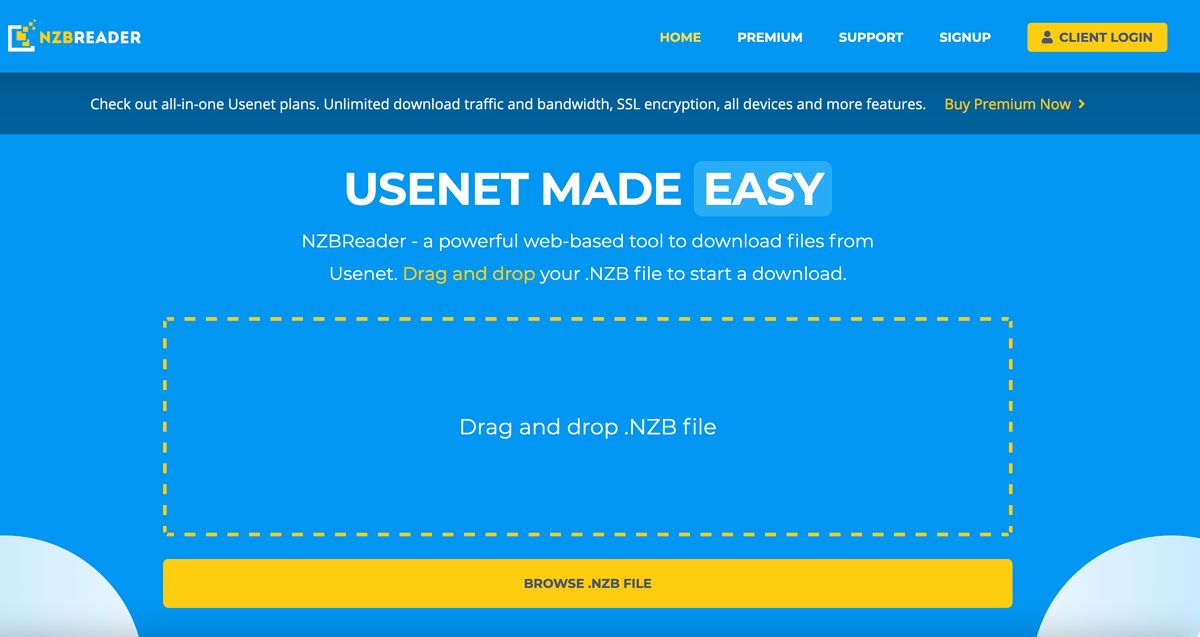

- #MAC USENET CLIENT OPENSOURCE HOW TO#
- #MAC USENET CLIENT OPENSOURCE INSTALL#
- #MAC USENET CLIENT OPENSOURCE PC#
Click the checkbox here to enable the VM server. To run the VM server and manage it via the client, you will need to navigate to Edit > Preferences > GNS3 VM server. Why? Because we need to use the client to make some changes. Highlight the command using the arrow key and hit the enter key to execute it. Click on OK, and it should display a list of commands that you can use. The VM should boot and you should see a window with the version details of the GNS3 server. Once it appears in VMWare Player's main screen, power on the new VM by clicking "Play Virtual Machine".
#MAC USENET CLIENT OPENSOURCE HOW TO#
How to get the GNS3 VM server working with VMWare Workstation Player If you have one you can import it from the file menu.
#MAC USENET CLIENT OPENSOURCE INSTALL#
How about adding a Cisco router? To do this you will need to install its image and you need to get this from Cisco. You don't need the VM server for such simple setups, it's only required for VIRL or other images.
#MAC USENET CLIENT OPENSOURCE PC#
Click on the console button to open up a PUTTY console for each linked PC and run commands. Three of the computers are connected to Ethernet0 on the switch, while two PCs are offline, as indicated by the colored box next to each interface. In this particular setup, Hovering over the switch shows you the status. You can use the toolbar at the top to start, pause or stop the nodes to give you an idea of the network's connectivity. Congratulations, you have created your first topology. So we drag 5 VPCS to the workspace, a switch, and draw links between the devices. Let's create a graphical network for demonstration purposes? Our virtual office is going to have 5 computers (Virtual PCs) and these will be connected to a local ethernet via a switch. The topology summary pane on the right corner lists each of your devices.

You can enable the grid if you want things to look tidy. Essentially, this is very similar to creating a flowchart. To connect them to one another, add a link. Drag a symbol from the sidebar to the workspace to add a new interface. It has the following options: routers, switches, end devices, security devices, and links. The sidebar on the left displays the nodes (or interfaces) that you can add to the workspace in the middle. Note: However, pay attention to the final step of the installation, because there is one more optional program (Solarwinds toolset) that you can download. Npcap is required for your network cards to communicate. But then I noticed that the GNS3 client integrates these tools and you can use them directly from within the program's interface. You can uncheck any of these, though I would suggest you install them unless you know that you don't require some of them I did so for the purpose of reviewing them. The installer has quite a few third-party network tools that are pre-selected for installation. Windows users should download the all-in-one (EXE) from GitHub or SourceForge. The GNS3 client is what you use for controlling the virtual machine server and simulating the network. Installing the GNS3 client on Windows, Mac, and Linux You can download the program and the server VM from the GitHub or SourceForge pages without registration. Note: If you want to download GNS3 from the official website, you will need to register for an account, and that requires a lot of personal information.


 0 kommentar(er)
0 kommentar(er)
